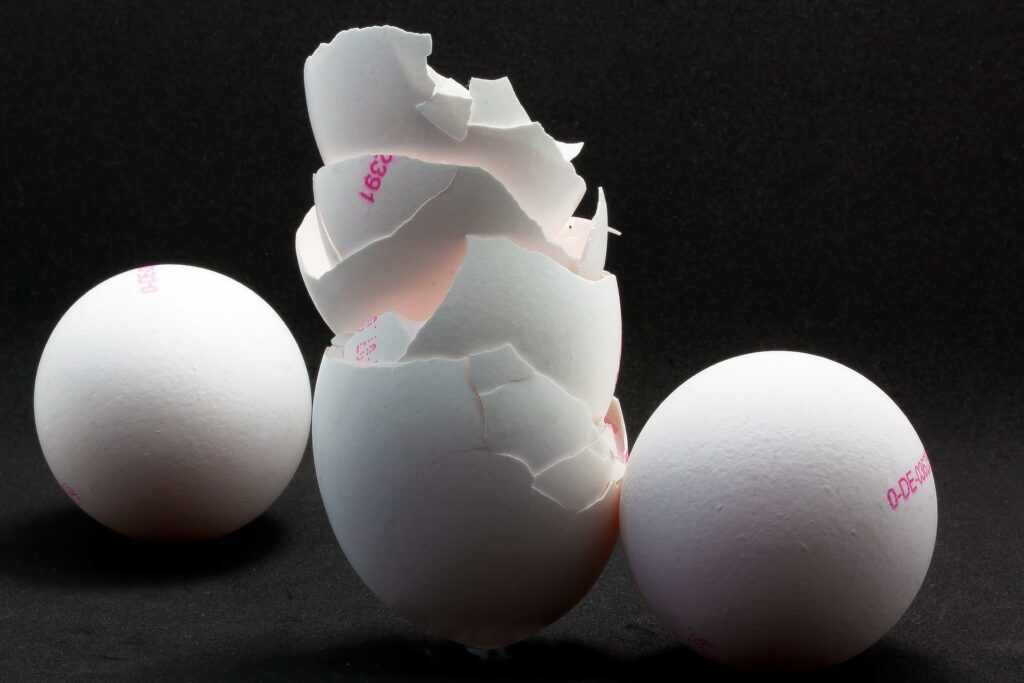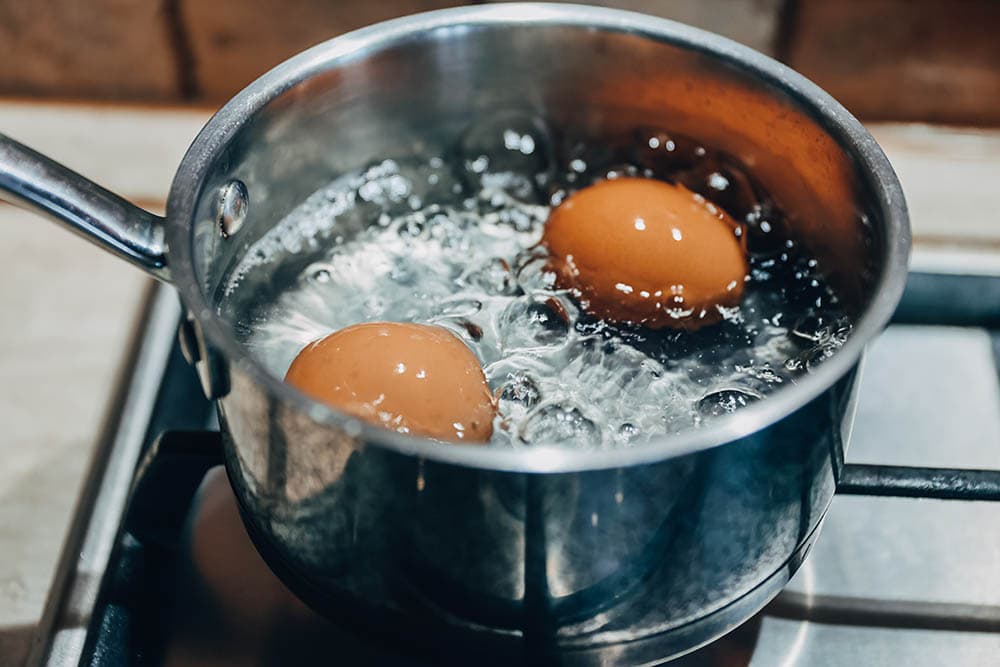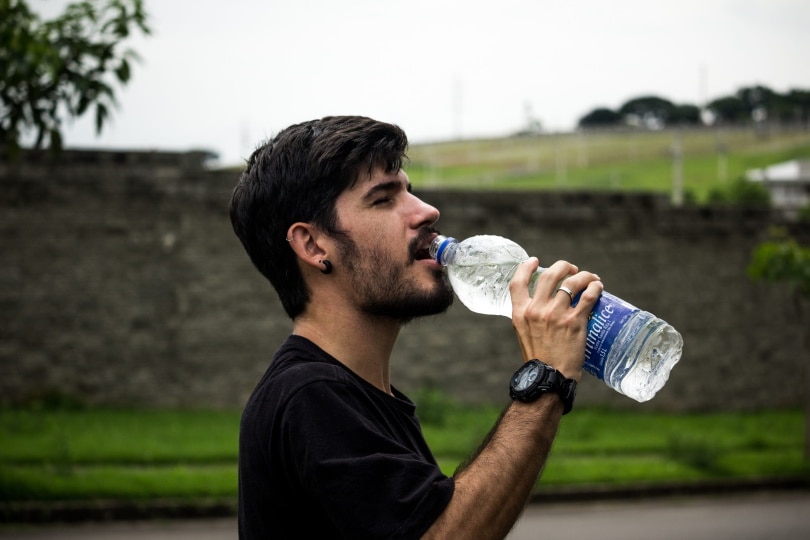How Much Water Does It Take to Produce an Egg? Facts & FAQ
-

- Last updated:

Have you ever wondered what it takes to produce one of our favorite breakfast foods? In a single chicken egg, there are approximately 78 calories when served plain, but did you know that it takes approximately 53 gallons of water to produce a single egg?
You may think, “There’s no way chickens guzzle that much water.” However, the feed we give chickens is made from grain, which takes a lot of water to produce. On top of that, chicken feed is “water-intensive,” meaning it requires more. So, the vast majority of water it takes to produce an egg goes into the chicken’s feed.
To put it in perspective, a single loaf of bread takes 288 gallons to water and process the grain, not to mention the baking process itself. This reveals that nearly everything we eat is made of what is called “virtual water.”
 What Food Takes the Most Water to Produce?
What Food Takes the Most Water to Produce?
Far and away, beef takes the most amount of water to produce. A single pound of beef takes about 1,800 gallons of water to produce. At less than half the amount of water it takes to produce beef, pork takes about 720 gallons per pound. Third on our list are eggs at 636 gallons of water per dozen.

Which Foods Have the Smallest Water Footprint?
Vegetables have the smallest water footprints, specifically carrots, lettuce, watermelon, and turnips. Even sugar cane has a small water footprint at just 25 gallons of water to produce one pound of sugar cane.
How Many Gallons of Water Does the Average Person Use Per Day?
According to the EPA, the average American uses approximately 82 gallons of water per day. When we think of water, we primarily think about the water we drink, and most of us need to drink more water. If we only drank even half a gallon of water per day, how do we use the other 81.5 gallons?
We shower and bathe, flush the toilet, run the dishwasher, and wash our laundry. Watering the lawn is also a costly expense. All these things contribute to the water we use in one day, not including virtual water. The number of gallons we use will depend on the types of food and how much of it we eat.

What Is the Easiest Way to Save Water at Home?
There are easy ways to save water at home. Most water consumption happens in the kitchen; washing dishes and preparing food can use a lot of water. One of the best ways to ensure that you will be more efficient is to fill up your sink basin with water rather than let the water run the entire time. Also, use your dishwasher and let it rinse the plates for you. Make sure it’s full before you start it as well.
 In Conclusion
In Conclusion
What we hope that we have shown you is how much water goes into creating, directly or indirectly, something so small, like an egg. What we are not saying is that you should forfeit a protein-rich diet (if that’s what’s best for you) to save water. That being said, a significant amount of water waste occurs worldwide, and there are ways to reduce your consumption without any hassles.
- Related read: How Much Water is Used to Make a Pound of Chicken
Featured Image Credit: Pixabay
Contents
 What Food Takes the Most Water to Produce?
What Food Takes the Most Water to Produce?